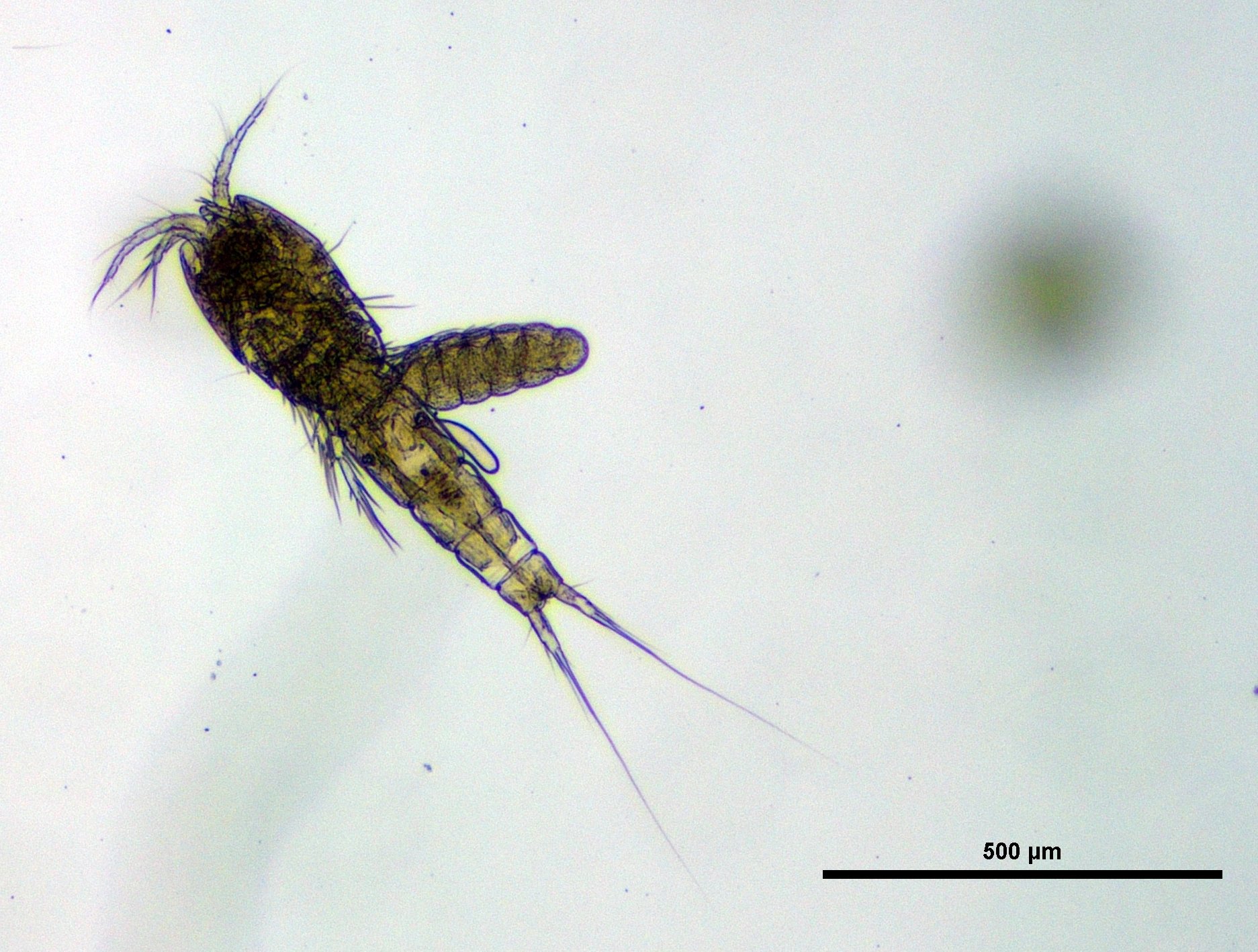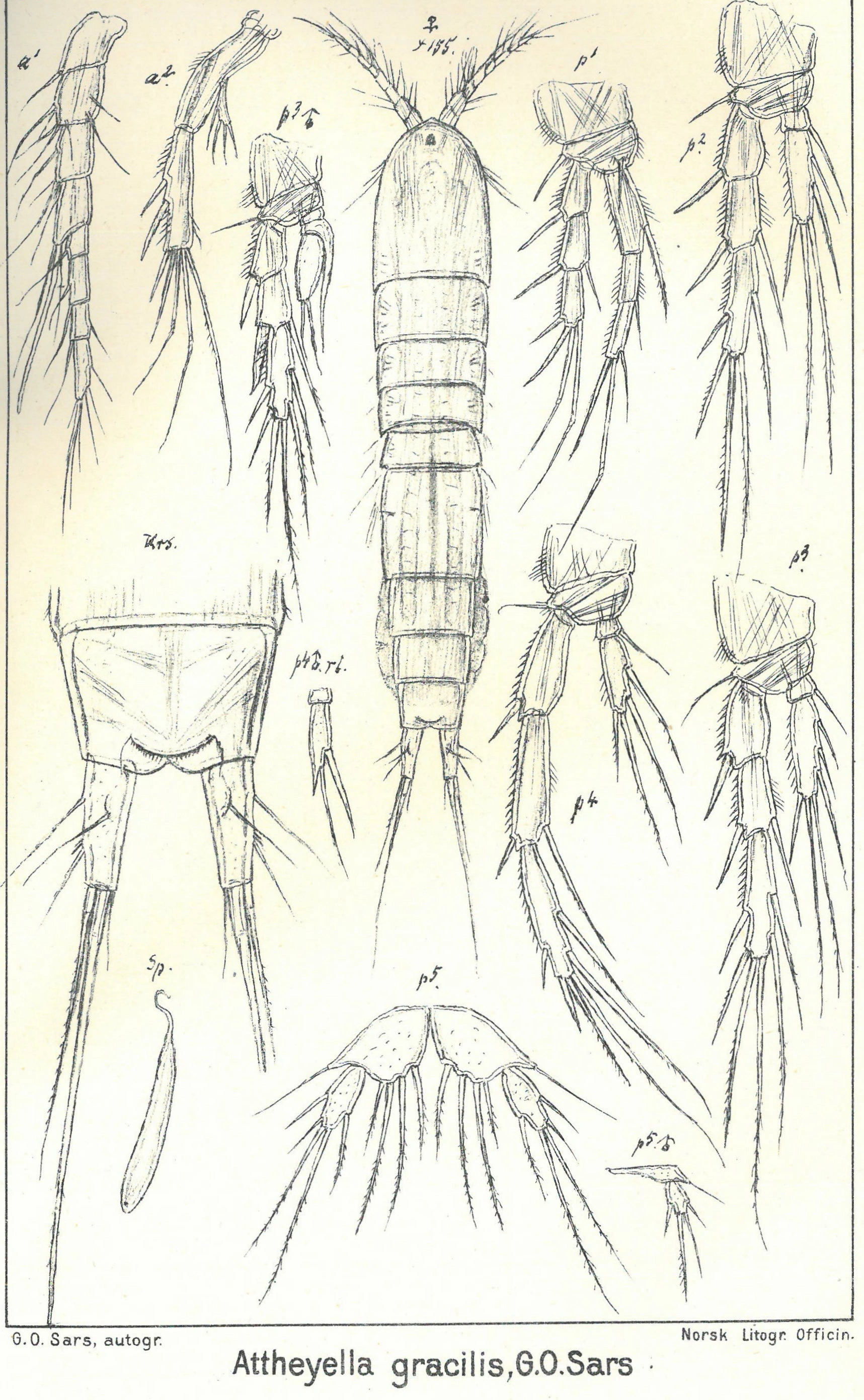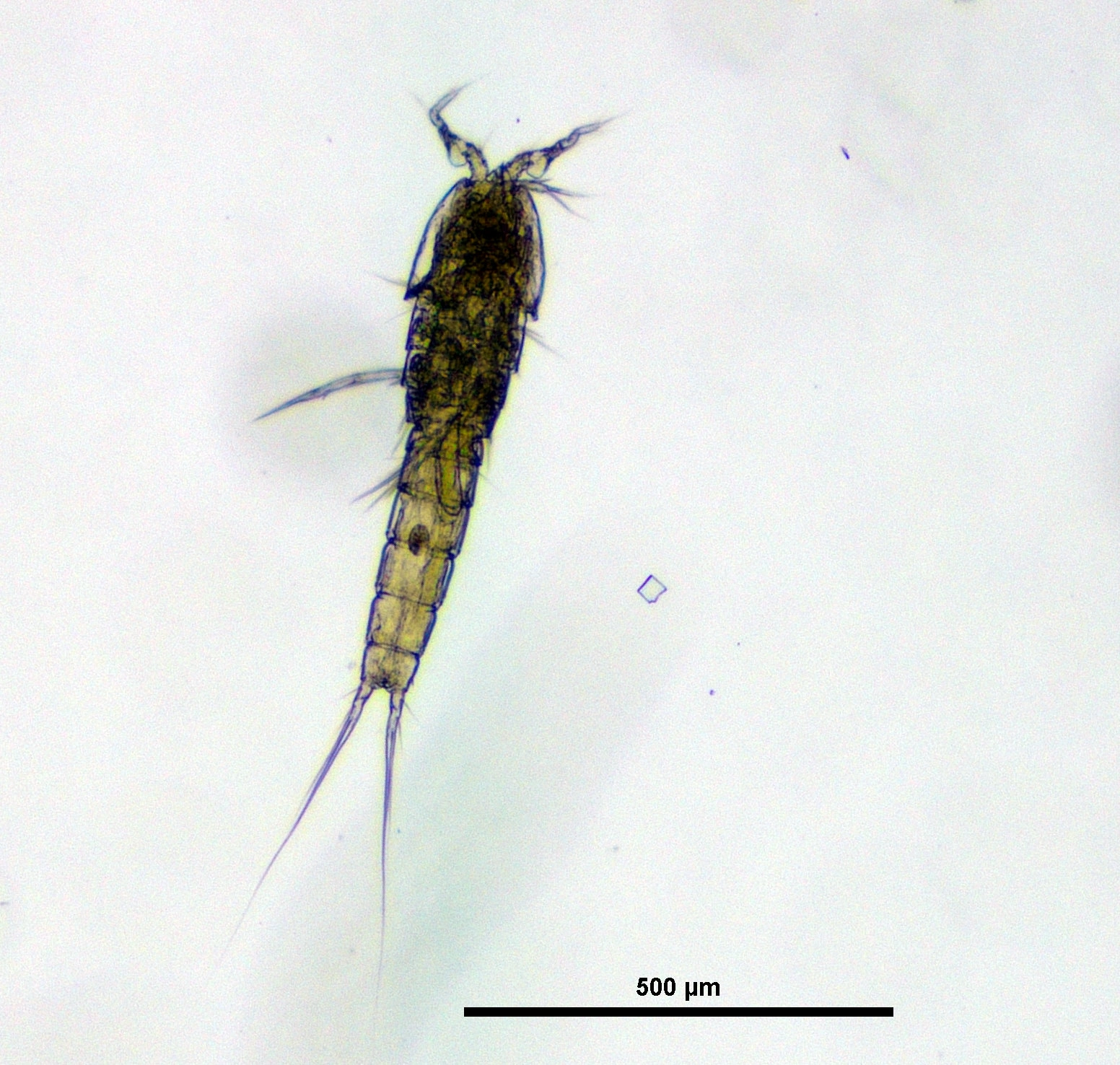Elaphoidella gracilis
Elaphoidella gracilis is a rare species having a scattered distribution in Norway. The majority of records are from mosses, sand, stones, and vegetation in the littoral of lakes.
Key characteristics
Elaphoidella gracilis is a large and very slender harpactoid. Its legs are elongated and with long spines and setae’s. The exopod in the first four legs has three segments, the same as the endopod of its first leg, while in legs 2–4 the endopod is 2-segmented. In the first leg, the endopod is longer than the exopod, but for the legs 2–4, the endopod is shorter than the exopod. Its rostrum is small and conical. The operculum is rounded with a number of small, short spinules. The caudal ramus is about three times as long as wide, having a conical shape, slightly tapering towards the distal part. The antennule consists of eight segments.
Female: Length 0.60–0.75 mm
Male: Length 0.60–0.65 mm
Ecology and distribution
Elaphoidella gracilis has a Middle Eastern and Palearctic distribution and is a rare species in Norway having a scattered distribution. It lives in a various types of water bodies – lakes, ponds, stony shores, swamps, springs, litter, mosses, in the hyporheic zone, soil microhabitats, interstices in dead aquatic plants. It is a warm water species.



